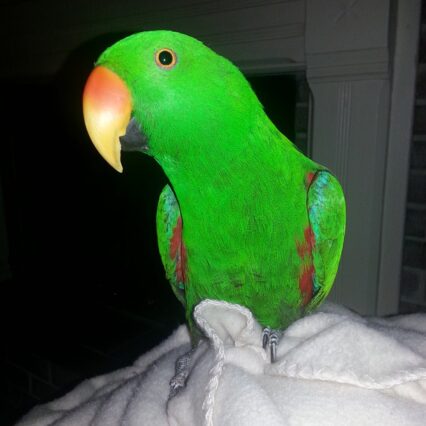- May 23, 2024
White Macaw Parrot: 10 Fascinating Facts
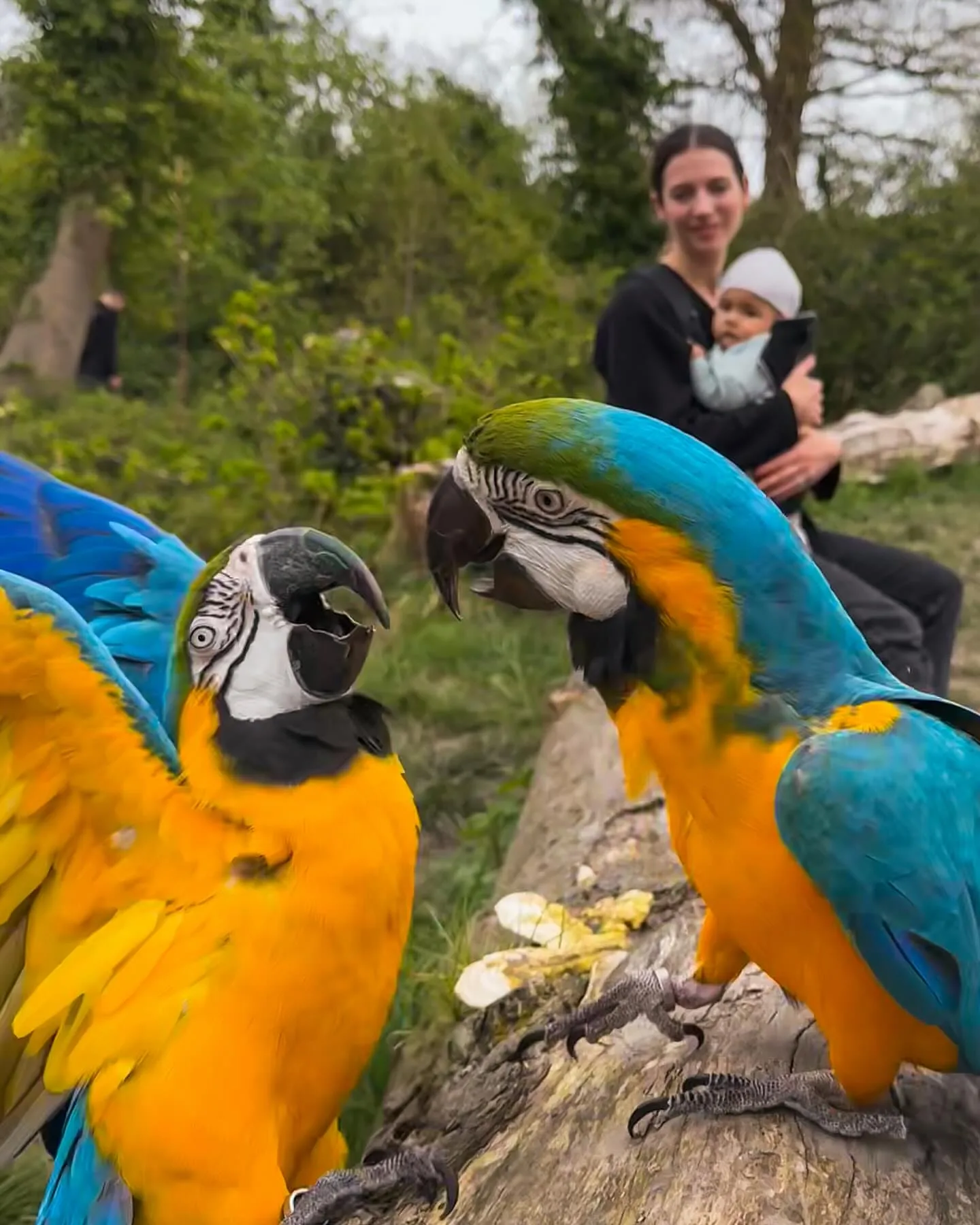
Discover the enchanting world of white macaw parrots with our expert insights. From their striking appearance to unique behaviors, we delve into what makes these majestic birds stand out. Learn about their care requirements, ideal habitats, and fascinating characteristics that make them a captivating addition to any bird enthusiast’s collection. Scroll down for reviews of our top picks!
Browse our shop for beautiful birds. Find your perfect parrot companion today
-
Sale Product on sale
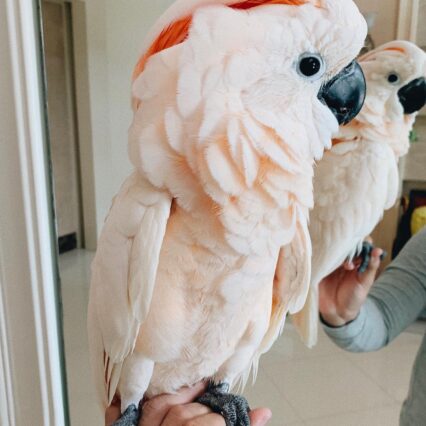 My Name is GISELE, Female Umbrella Cockatoo. 20% Off Today – Don’t Miss Out!
My Name is GISELE, Female Umbrella Cockatoo. 20% Off Today – Don’t Miss Out!$1,350.00Original price was: $1,350.00.$1,080.00Current price is: $1,080.00. -
Sale Product on sale
 Buy LAGO, Female Electus. 20% Off Today – Don’t Miss Out! Limited Time:
Buy LAGO, Female Electus. 20% Off Today – Don’t Miss Out! Limited Time:$1,100.00Original price was: $1,100.00.$900.00Current price is: $900.00.
Key Takeaways
- Appreciate their uniqueness: White macaw parrots are rare due to their albino varieties and distinctive facial feather patterns.
- Provide ample space: These parrots have an impressive wingspan of 41 inches, requiring spacious environments for their well-being.
- Engage in interactive learning: Benefit from their exceptional mimicking abilities by teaching them new words and sounds for mental stimulation.
- Create enriching environments: Given their intelligence as problem solvers, offer them puzzles and toys to keep them mentally engaged.
- Prioritize companionship: Understand their nature as social creatures that form lifelong monogamous bonds, emphasizing the importance of social interaction.
- Support conservation efforts: Due to their vulnerable status from habitat loss and illegal trade, contribute to initiatives that protect these magnificent birds.
Rare Albino Varieties Exist
Rare albino white macaws stand out with their stunning white plumage, a result of unique genetic mutations. These exquisite birds are a sight to behold, showcasing a mesmerizing contrast to the typical colorful macaw species. Albino white macaws are exceptionally rare in the wild, making spotting one a truly unforgettable experience for bird watchers and nature enthusiasts.
Bird enthusiasts are captivated by these albino varieties due to their sheer rarity. The distinctive appearance of these white macaws adds an element of exclusivity and intrigue, drawing attention from around the globe. With their striking white feathers and captivating presence, albino white macaws hold a special place in the hearts of those who have had the privilege of encountering them in their natural habitat.
Distinctive Facial Feather Patterns
White macaws exhibit intricate facial feather patterns that set them apart. These unique markings not only contribute to the bird’s aesthetic appeal but also serve as key identifiers for each individual. The diversity in these patterns among white macaws allows for easy recognition within their flock.
In social settings, these facial feather patterns are crucial for communication and establishing hierarchies. By observing these intricate designs, one can gain valuable insights into the personality and mood of a white macaw. This distinctive feature adds depth to their interactions and behaviors, making each bird truly one-of-a-kind.
Understanding the significance of these facial feather patterns enhances our appreciation for the complexity and beauty of white macaws, showcasing the intricate details that make them stand out in the world of avian species.
Impressive Wingspan of 41 inches
White macaws, known for their impressive wingspan of 41 inches, possess a remarkable feature that sets them apart in the avian world. These majestic birds can gracefully soar through the skies, showcasing their grandeur and agility.
The 41-inch wingspan of white macaws plays a crucial role in their survival and lifestyle. It allows them to cover vast distances efficiently, aiding in their search for food sources and ideal nesting sites. This unique characteristic not only enhances their flight capabilities but also contributes to their overall adaptability in various environments.
Understanding the significance of this remarkable wingspan sheds light on the exceptional nature of white macaws and emphasizes the importance of preserving these magnificent creatures in their natural habitats.
Exceptional Mimicking Abilities
White macaws are known for their exceptional mimicking abilities, showcasing a talent for replicating various sounds and voices with remarkable accuracy. This unique skill not only adds to their charm but also makes them popular choices as pets and performers. The mimicry displayed by white macaws is a testament to their cognitive capabilities, offering insights into the intelligence of these fascinating birds.
- Accurate Replication: White macaws can mimic a wide range of sounds, from household noises to human speech, demonstrating their adaptability and keen auditory senses.
- Entertainment Value: Their ability to mimic voices and sounds adds an entertaining element, captivating audiences and delighting both children and adults.
- Cognitive Complexity: The intricate mimicry patterns of white macaws highlight the complexity of their cognitive processes, showcasing their learning abilities.
Intelligent Problem Solvers
White macaws, known for their intelligence, showcase remarkable problem-solving skills in various situations. Observing these birds in action provides valuable insights into their adaptability and resourcefulness. They exhibit a keen ability to analyze challenges and devise creative solutions, highlighting their cognitive prowess.
In the wild, white macaws face complex obstacles such as finding food and shelter, which they navigate with strategic thinking and innovation. Their problem-solving capabilities enable them to thrive in diverse habitats, showcasing their resilience and intelligence.
These parrots’ knack for overcoming obstacles through intelligent strategies underscores their remarkable adaptability and cognitive agility. By demonstrating advanced problem-solving skills, white macaws prove themselves as adept learners capable of thriving in dynamic environments.
Lifelong Monogamous Bonds
White macaw parrots exhibit a remarkable trait of forming lifelong monogamous bonds with their partners. This unique behavior showcases their loyalty and dedication in relationships, setting them apart from other species. Understanding the intricacies of these bonds provides valuable insights into the social dynamics of white macaws.
The commitment to lifelong partnerships among white macaws highlights the depth of their emotional connections and the importance they place on their chosen mate. This loyalty plays a crucial role in their breeding success and overall well-being, emphasizing the significance of stable and enduring relationships in their lives.
Social Creatures in Flocks
White macaw parrots are social creatures that thrive in flocks, relying on communal interactions for survival and companionship. Within these flocks, intricate social dynamics dictate their daily activities and behaviors.
- Community Interactions: White macaws exhibit strong bonds within their flocks, engaging in activities like grooming and vocalizations to strengthen social connections.
- Social Hierarchies: Observing white macaws in their natural flock settings reveals the presence of hierarchies where dominant individuals lead while others follow.
- Communication Patterns: These parrots communicate through various vocalizations, body language cues, and group movements to convey messages and maintain cohesion.
Understanding the social nature of white macaws sheds light on their fascinating behaviors and emphasizes the importance of companionship and interaction for these intelligent birds.
Unique Vocalizations for Communication
White macaws exhibit unique vocalizations to convey emotions, warnings, and greetings, showcasing their intricate communication abilities. These distinctive calls play a crucial role in their social interactions and group dynamics. By understanding the diverse range of vocalizations in white macaws, we gain insights into the complexity of their communication systems and how they navigate their environment.
Through various vocal cues, white macaws can express joy, fear, aggression, or even specific needs within their flock. This form of communication helps them establish hierarchies, warn others of potential threats, and strengthen social bonds. Researchers have observed that each white macaw has a distinctive call, allowing individuals to be recognized within the group based on their unique vocal signature.
The ability of white macaws to use vocalizations for nuanced communication highlights the depth of their social intelligence and adaptive skills in the wild.
Vulnerable to Habitat Loss
White macaws face a significant threat from habitat loss primarily caused by deforestation, urbanization, and human encroachment. This loss of habitat directly impacts their survival and population numbers. The consequences of such habitat degradation are alarming, emphasizing the urgent need for conservation efforts to protect these beautiful birds. Preserving the ecosystems where white macaws thrive is crucial to ensuring their continued existence in the wild. The delicate balance of their natural habitats must be maintained to safeguard the future of these magnificent creatures.
Endangered Status Due to Illegal Trade
White macaws, known for their stunning beauty and unique characteristics, are facing a critical endangered status primarily due to illegal trade activities. The illicit demand for these birds in the exotic pet market poses a significant threat to their existence in the wild. The impact of illegal trade on white macaw populations is alarming, highlighting the urgent need for conservation efforts to safeguard these majestic creatures.
Raising awareness about the detrimental effects of illegal trade on white macaws is crucial in addressing the conservation challenges they encounter. By understanding the implications of this unlawful activity, we can work towards implementing stricter regulations and enforcement measures to protect these vulnerable species from exploitation.
Advocating against the illegal trade of white macaws is imperative to ensure their survival and prevent further decline in their populations. It is essential to take collective action to combat wildlife trafficking and preserve the natural habitats of these magnificent birds.
Closing Thoughts
You’ve delved into the fascinating world of white macaw parrots. These birds are not just stunning creatures with unique features and impressive abilities; they are also facing threats due to habitat loss and illegal trade. By understanding their characteristics and challenges, you can appreciate the importance of conservation efforts to protect these magnificent birds for future generations.
Take action today by supporting organizations dedicated to preserving wildlife habitats and combating illegal wildlife trade. Spread awareness about the plight of white macaw parrots and advocate for stricter regulations to ensure their survival. Every small step counts towards making a significant impact on safeguarding these beautiful birds. Together, we can make a difference in protecting the white macaw parrot species from further decline.
Frequently Asked Questions
What are the distinctive features of white macaw parrots?
White macaw parrots are known for their rare albino varieties, unique facial feather patterns, impressive 41-inch wingspan, exceptional mimicking abilities, and intelligent problem-solving skills.
Are white macaw parrots social creatures?
Yes, white macaw parrots are social creatures that form lifelong monogamous bonds and thrive in flocks. They use unique vocalizations for communication within their group.
Why are white macaw parrots endangered?
White macaw parrots are vulnerable to habitat loss and face endangerment due to illegal trade activities. Conservation efforts are crucial to protect these magnificent birds from further decline.
How can one help in preserving the white macaw parrot population?
You can support conservation organizations working to protect the habitats of white macaw parrots, raise awareness about their endangered status, and refrain from participating in the illegal trade of exotic birds.
Can white macaw parrots be kept as pets?
While some people keep white macaw parrots as pets due to their intelligence and beauty, it is essential to ensure that they are sourced ethically and legally to prevent contributing to their endangerment in the wild.
Tags
What do you think?
Related Articles
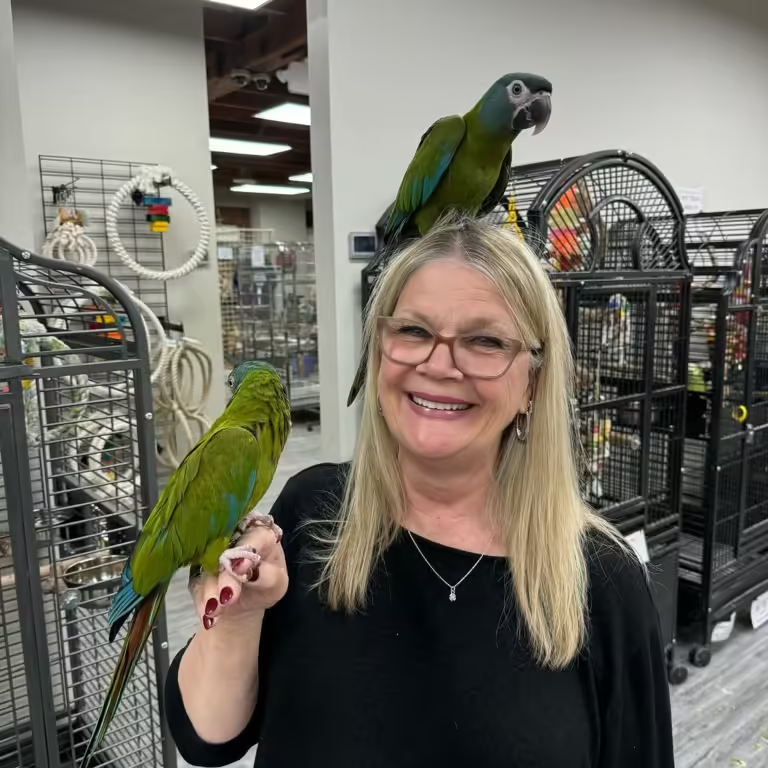
Find Parrots for Sale in Aurora IL: Top 5 Must-Visit Spots
Finding the perfect parrot in Aurora, IL, is an exciting adventure for bird lovers. This city offers various options for
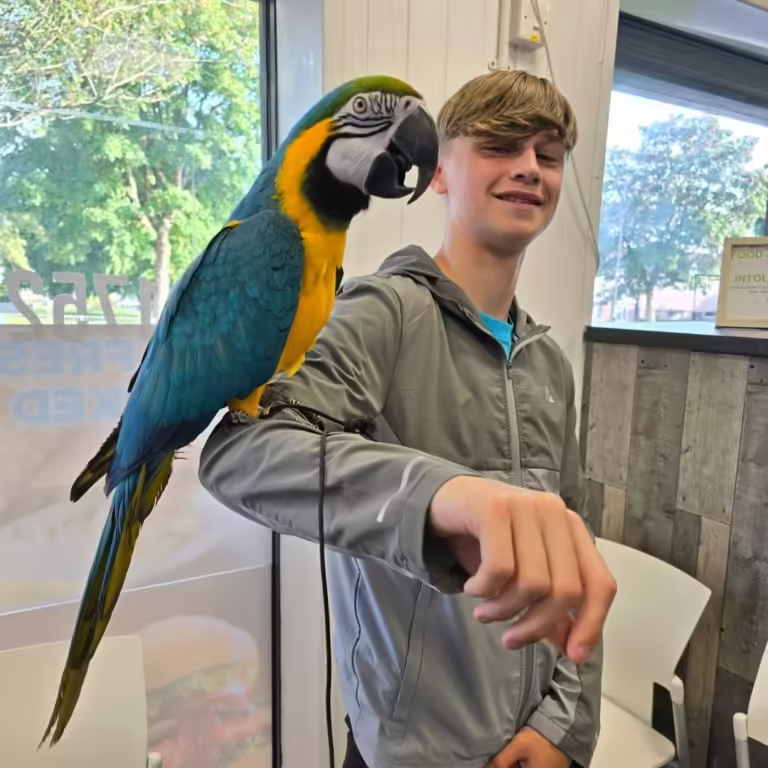
Find Parrots for Sale in Trenton NJ: Top 5 Must-See Spots!
Finding the perfect parrot can be a fun adventure. Trenton, NJ, offers plenty of options for bird lovers. From local
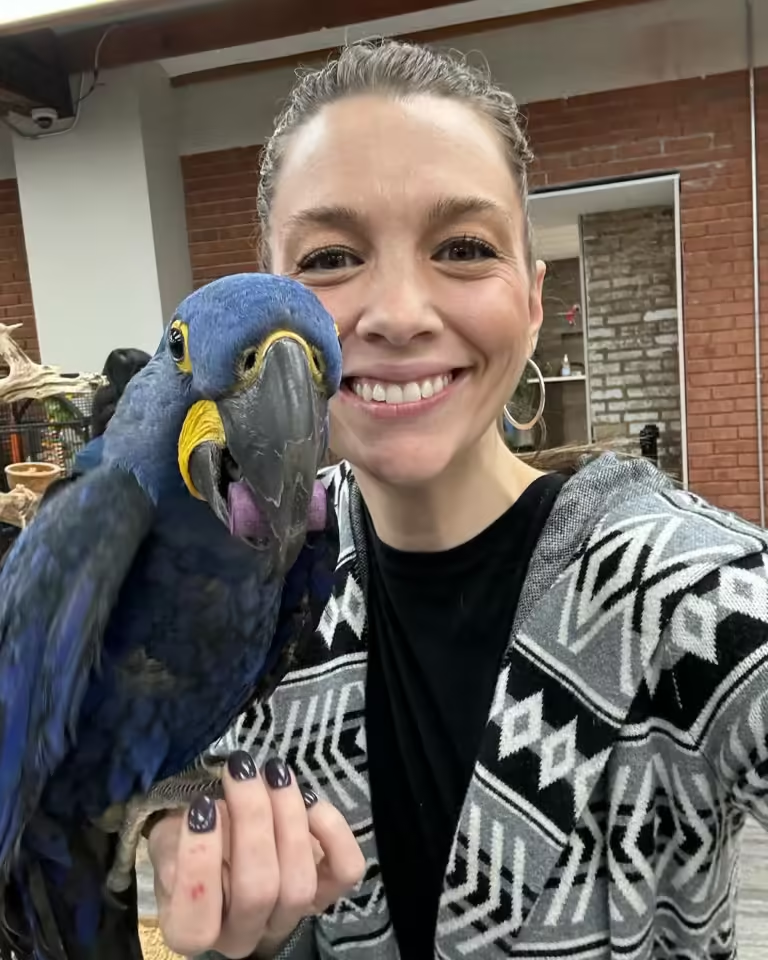
Find Parrots for Sale in Woodbridge Township NJ: Top 5 Must-See Spots!
Finding the perfect parrot can be a fun adventure. Woodbridge Township, NJ offers plenty of options for bird lovers. From

